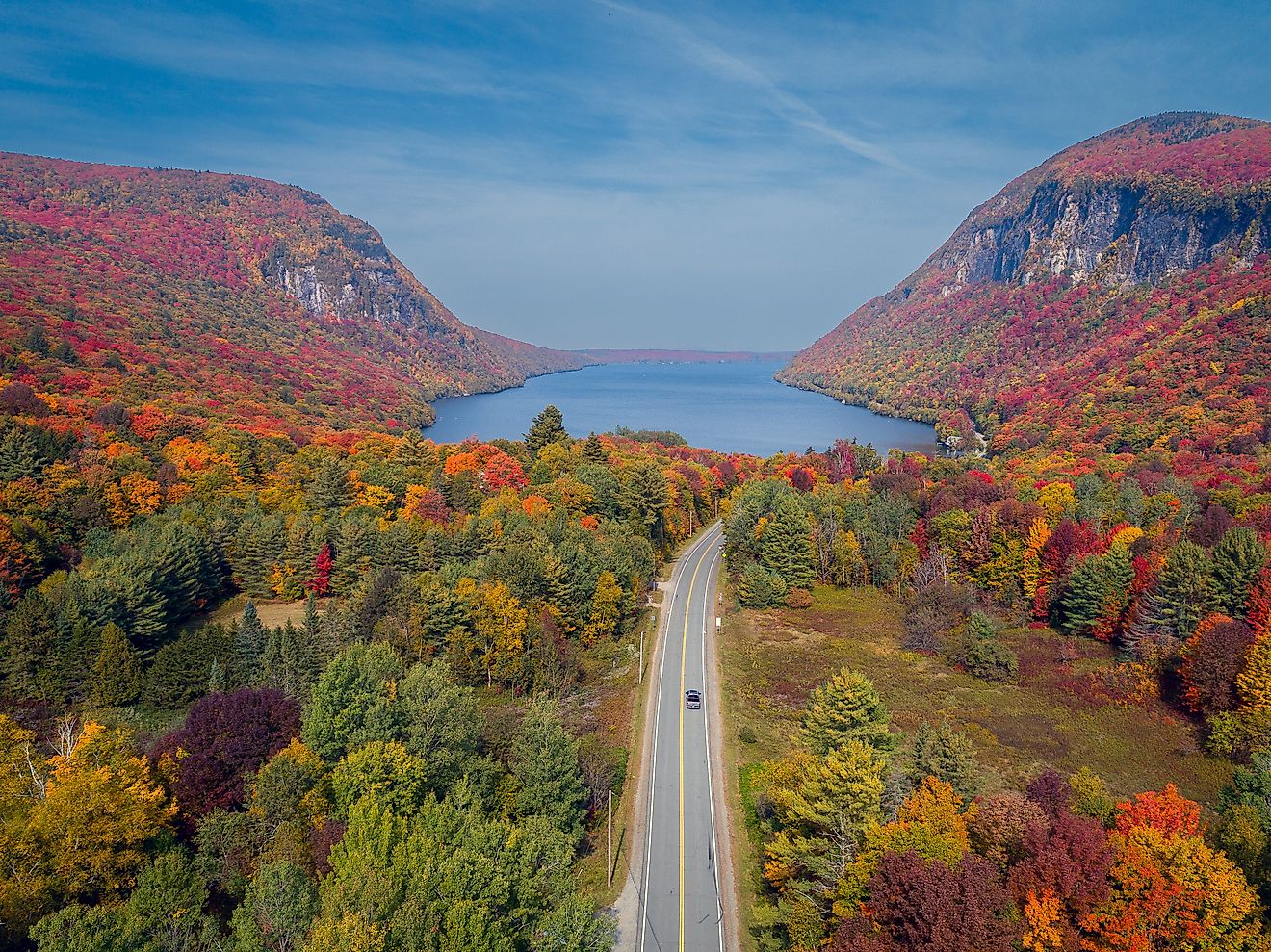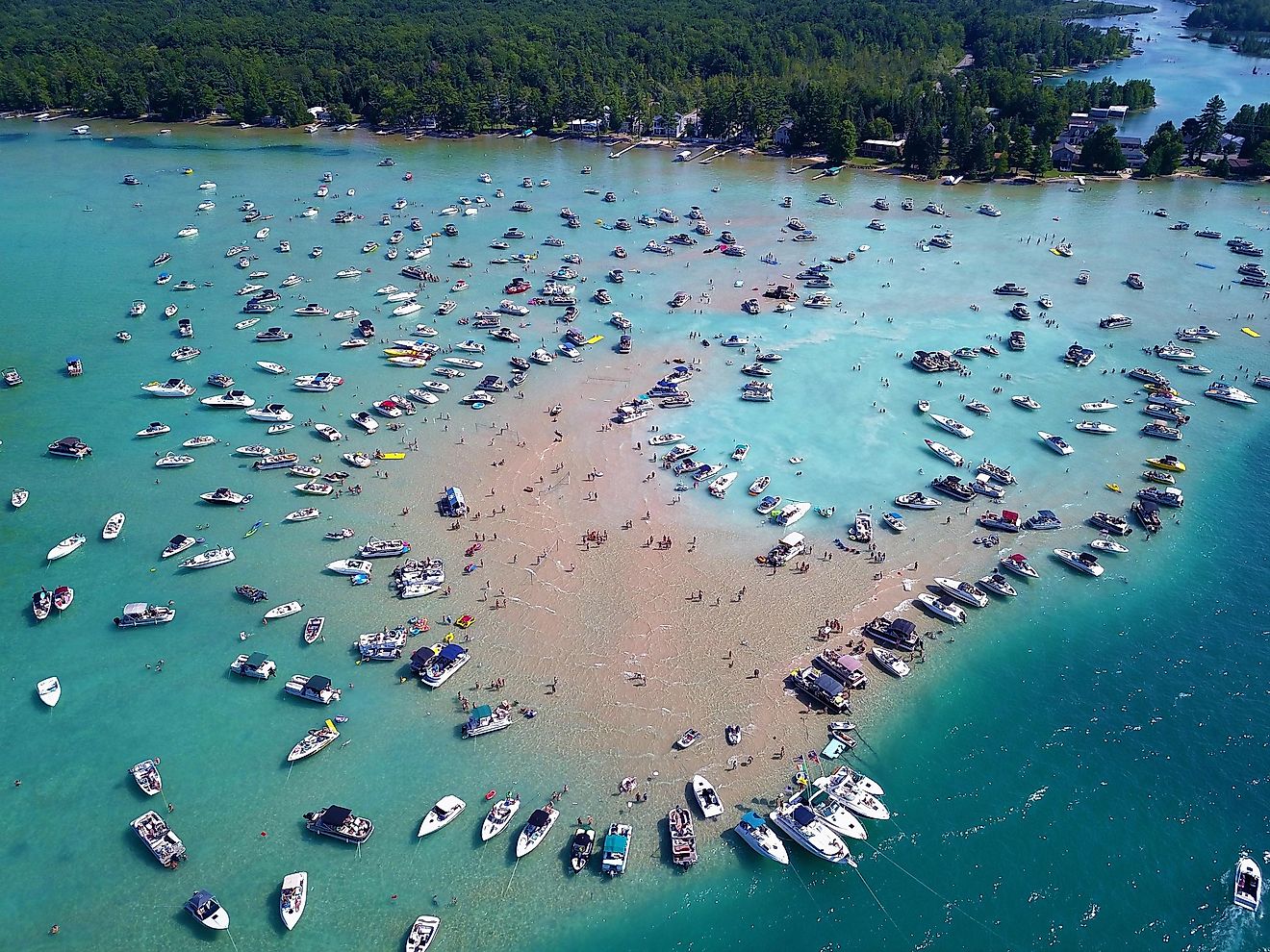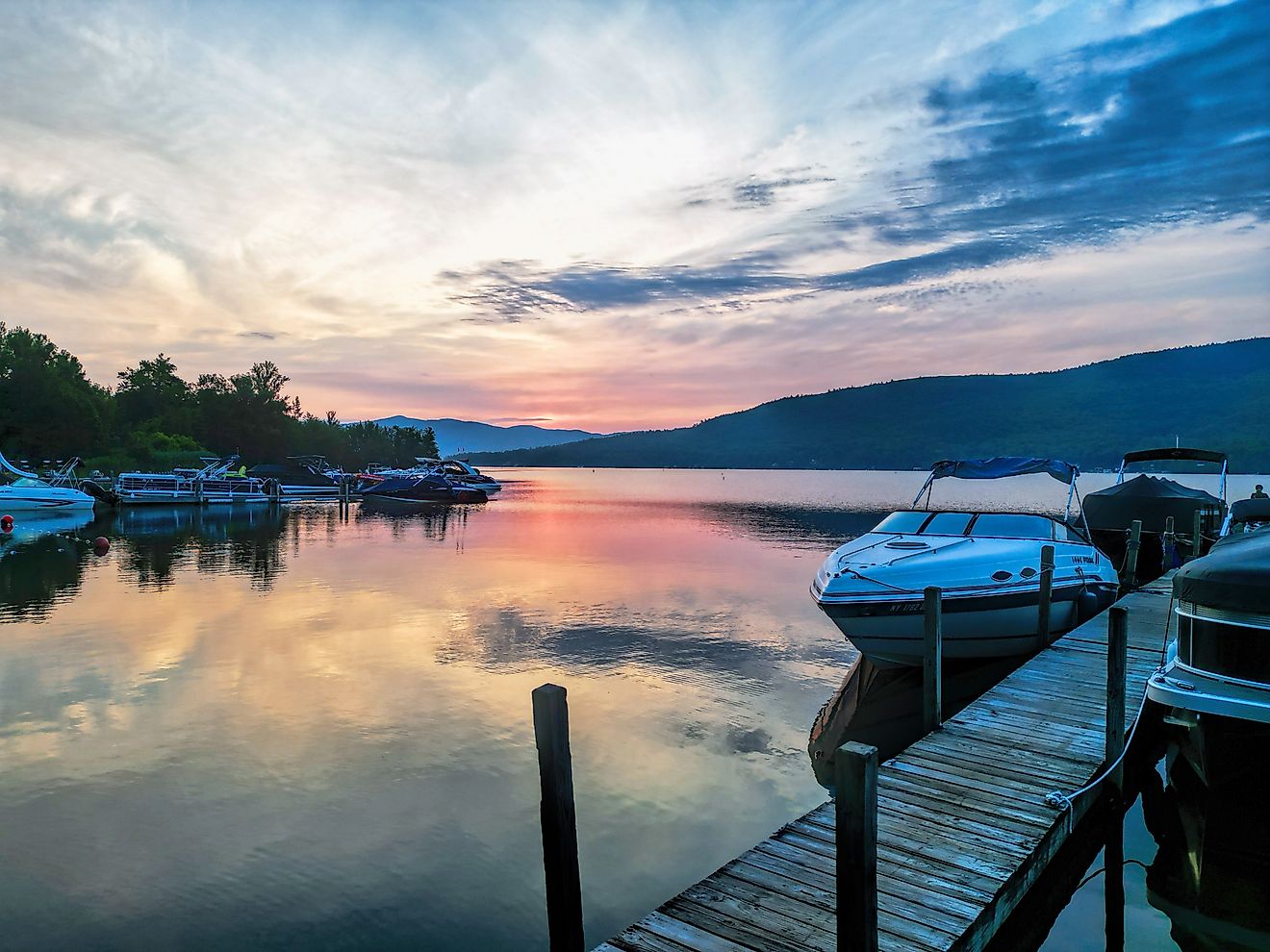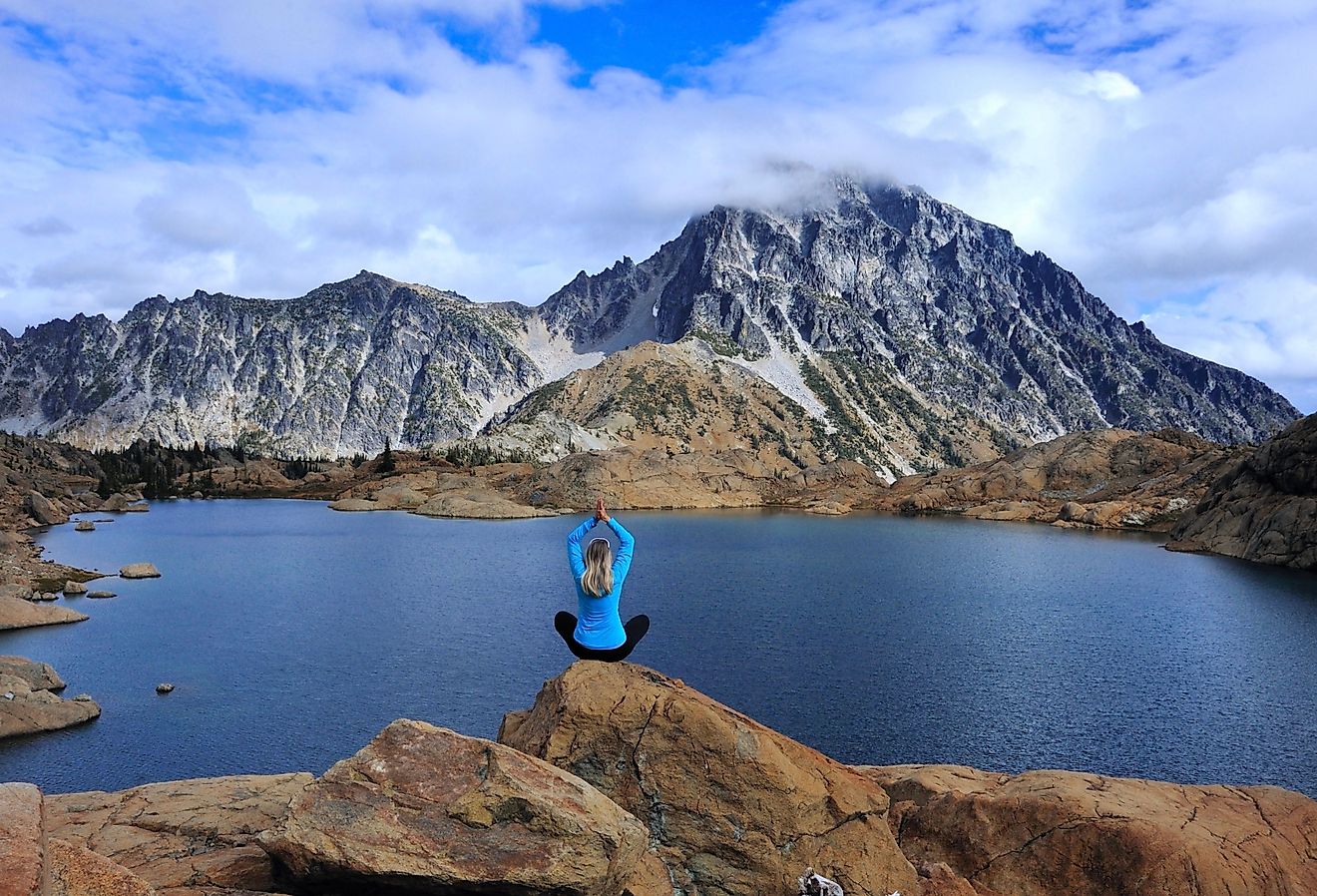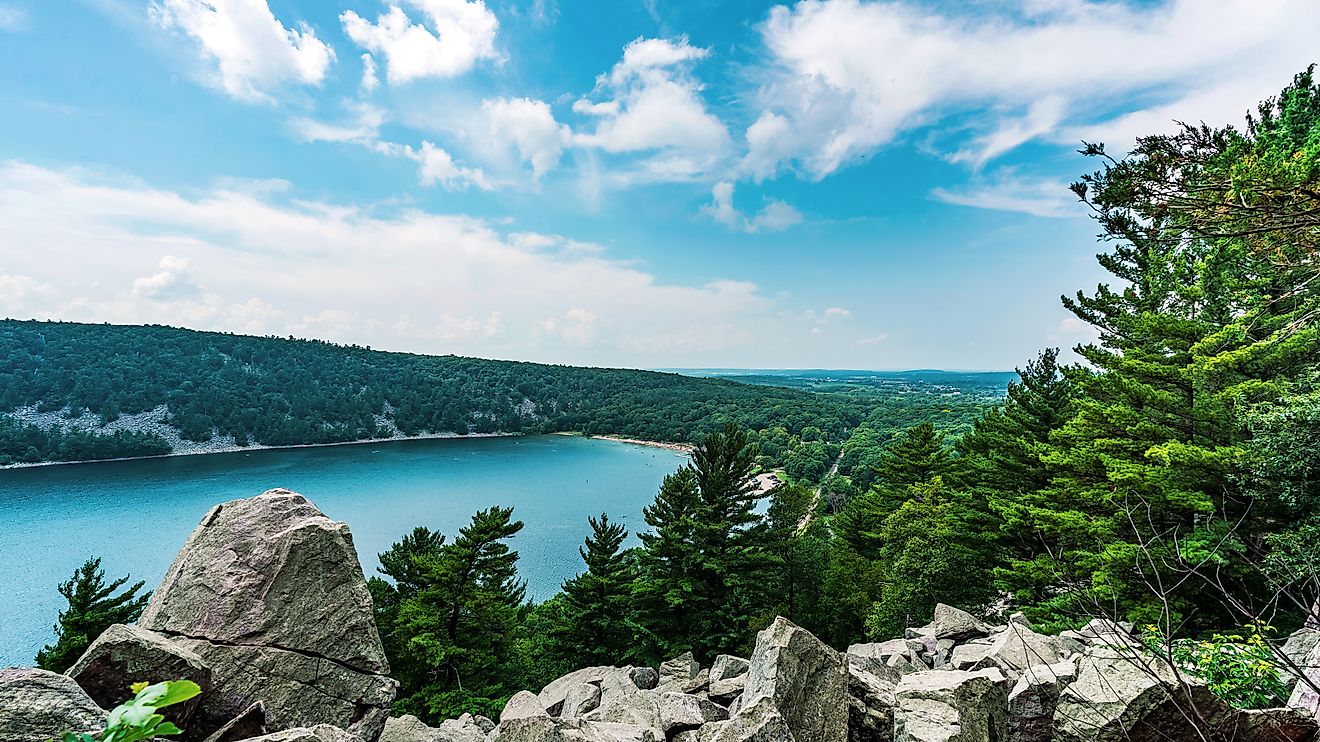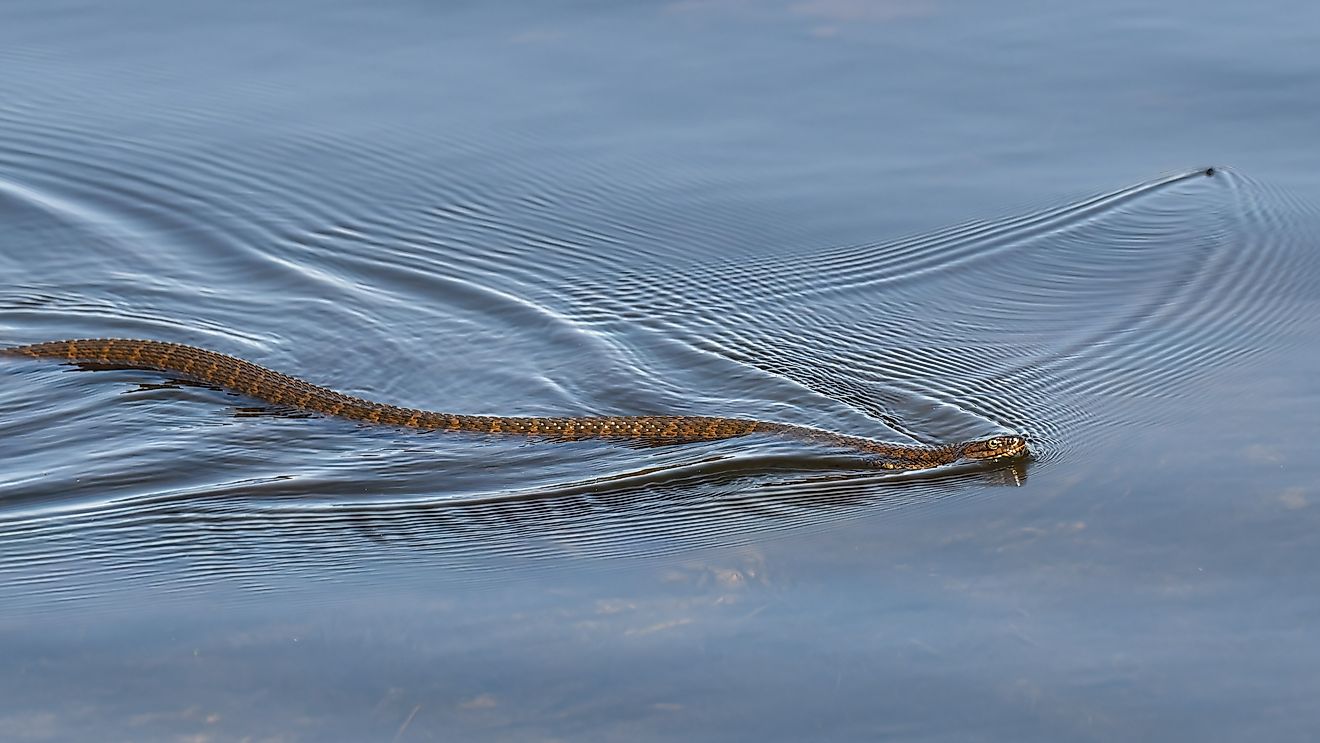
Seamounts
Seamounts are massive submarine volcanic mountains that rise abruptly from the seafloor to about 3,300 ft to 13,100 ft in height but do not reach the sea level. Usually formed from extinct volcanoes, oceanographers define seamounts as independent conical volcanic features with limited summit areas that rise to at least 3,281 ft from the surrounding deep seafloor. Seamounts thus widely differ from islands, islets, and cliff-rocks, as all these have peaks above the water surface, while the peaks of seamounts remain thousands of feet below the water surface. Over geologic time, when the peaks of the biggest seamounts reach the water surface, waves act to erode their summits, reducing them to flat surfaces. Such flat-top seamounts that have subsided and sunk below the water surface are called guyots.

It is estimated that over 14,500 identified seamounts are currently present in the Earth’s oceans, of which scientists have been able to map 9,951 seamounts and 283 guyots spread over a total area of 3,396,210 sq. mi. Due to their abundance, many of these seamounts remain to be adequately documented and studied in detail. Nevertheless, seamounts are one of the world’s most common marine ecosystems, harboring many marine species that significantly affect the productivity of offshore ecosystems. However, the presence of these seafloor structures has been one of the major causes of naval vessel collisions. Moreover, flank collapses of older seamounts can cause landslides that have the capacity to generate massive tsunamis.
Geography Of Seamounts
Widely distributed in space and age, seamounts are found in all the world's ocean basins. Geographically, most of these seamounts are of volcanic origin and are therefore located close to mid-ocean ridges, island arcs, and mantle plumes. In addition to the currently 14,500 identified seamounts, there are over 80,000 small knolls, ridges, and hills that reach less than 3,280 ft in height in the world’s oceans. Overall, about 4.39% of the North Pacific Ocean’s seafloor is covered by seamounts and guyots. However, there are only 16 seamounts and no guyots in the Arctic Ocean, whereas the Black and Mediterranean seas together contain 23 seamounts and two guyots.
The 9,951 seamounts mapped to date cover an area of 3,123,010 sq. mi. On average, the seamounts cover an area of 310 sq. mi, with the Black Sea, Mediterranean Sea, and Arctic Ocean containing the smallest seamounts, while the biggest mean-size seamounts are observed in the Indian Ocean, having an average area of 340 sq. mi. The largest seamount has been observed in the North Pacific, occupying an area of 6,000 sq. mi. In contrast, the Guyots cover a total area of 273,200 sq. mi and have an average area of 970 sq. mi which is more than double the average size of seamounts.
Distribution Of Seamounts
Seamounts are frequently observed in groups or as submerged archipelagos. The finest example of such type of seamount is the Hawaiian-Emperor seamount chain. Formed several years ago by volcanic activities, this seamount chain has subsided way below the water surface. Composed of the Hawaiian ridge, the Hawaiian-Emperor Seamount chain contains more than 80 identified undersea volcanoes that stretch for 3,900 mi from the Aleutian Trench in the extreme northwestern Pacific to the Kamaʿehuakanaloa Seamount approximately 22 mi southeast of the Island of Hawaiʿi. It is estimated that there are comparatively more seamounts in the Pacific Ocean than in the Atlantic Ocean. This distribution of seamounts in the Pacific Ocean can be defined as comprising many elongated seamount chains superimposed on a more or less haphazard background distribution.
Seamount chains are found in all three principal ocean basins, with the most number and most extensive seamount chains occurring in the Pacific Ocean. Some of these Pacific seamount chains include the Hawaiian-Emperor Seamount chain, Gilbert, Mariana, Tuomotu, and Austral Seamounts, Louisville, and Sala y Gomez ridges. The New England Seamounts stretch from the United States’ eastern coast to the mid-ocean ridge in the North Atlantic Ocean. Studies have revealed that clusters of the bigger Atlantic seamounts are associated with volcanic hotspots like Walvis Ridge, Bermuda Islands, Vitoria-Trindade Ridge, and Cape Verde Islands. Abundant seamounts are also found in the mid-Atlantic ridge and other spreading ridges in the Indian Ocean. Isolated seamounts like Bollons Seamount, Axial Seamount, Gorringe Ridge, and Eratosthenes Seamount, which do not have any clear volcanic origin, are less common. Oceanographers estimate that if all the known seamounts are gathered together into one area, they will form a landform about the size of Europe. Therefore, it is rightly said that the overall abundance and distribution of seamounts make them one of the Earth’s most common and lesser-understood marine structures and biomes.
Formation Of Seamounts

Although one of the two volcanic processes forms the majority of seamounts, a few, like the Christmas Island Seamount Province, do not exhibit a long hotspot-based chain formation. The magmatic rocks in the upper mantle form volcanoes close to mid-ocean ridges and tectonic plate boundaries, where the low-density magma rises to the surface through the crust. In contrast, the volcanoes close to or above the subducting zones are formed due to the addition of volatiles to the overriding plates by the subducting tectonic plates, in turn lowering the melting point of the overriding plates.
It is to be noted that whichever of these two volcanic processes is involved in the seamount formation has an intense effect on the composition of its eruptive materials. The lava which flows from the seamounts of the mid-ocean ridge and tectonic plate boundaries is usually basaltic, while the lava flowing from the volcanoes of subducting ridges is calc-alkaline. A thin layer of marine sediment covers the summits and flanks of seamounts. The subduction zone seamounts contain more significant amounts of sodium, alkali, and volatile substances than the mid-ocean ridge seamounts, resulting in more explosive eruptions.
All volcanic seamounts follow a complex evolutionary pattern beginning with their initial formation at the seafloor, followed by subsequent increases in size and changes in volcanic activities until they become less active, then subsidence and eventual extinction. The final fate of the volcanic seamounts is destruction through the subduction of their bottom oceanic plates and falling into an ocean trench.
Ecological Role Of Seamounts

Ecologically, seamounts play a vital role in ocean environments and are considered important biological hotspots. As nurseries for deep-sea fishes, seamounts act as productive fishing grounds supporting over 80 species of fish and shellfishes like spiny lobster, black oreo, mackerel, blackstripe cardinalfish, red king crab, tuna, red snapper, perch, orange roughy. They also offer a hard substrate for many suspension feeders like sponges and deep-sea corals to settle and grow. The volcanic rocks and the soft sediments on the seamounts provide suitable habitats for several marine invertebrate species like Xenophyophores, sea slugs, marine worms, microdrile worms, etc. Many seamounts feature hydrothermal vent communities that help in the geochemical exchange between the ocean and the seamounts.
As seamounts project out above the surrounding seafloor, they affect the standard water flow and the direction of ocean currents, influencing the flow of deeper waters in an otherwise still ocean bottom. This also results in the upwelling of nutrient-rich waters toward the ocean surface, which in turn increases the biological productivity of plankton and fishes, providing food for various seabirds, sharks, cephalopods, and marine mammals. Moreover, the isolated nature of seamounts plays an important role in the evolution of endemic species.
Exploration Of Seamounts
For a long period, the study of seamounts was hindered due to a lack of technology. Although seamounts were first sampled at the beginning of the 19th century, the technology to explore and sample seamounts as well as to study their position and depths in detail did not exist. In present times, surveyors who map seamounts use one of the two available methods: multibeam echo-sounding sonars on ships for topographic mapping; or using satellite altimetry for gravity field mapping. Research vessels that are fitted with multibeam echo-sounding sonars produce high-resolution maps, but these maps are often incomplete as the vessels are unable to reach the remote areas of the ocean. In contrast, satellite altimetry uses radar to gauge the shape of the seafloor. In these cases, the resulting maps are of low resolution but have much broader coverage. Recently, seafloor maps created with data from CryoSat-2 and other satellites have led to the discovery of numerous previously uncharted seamounts, and the number is expected to increase as more and more data is interpreted.
Importance Of Seamounts

As mentioned earlier, seamounts play a critical role in marine environments. The following points summarise the importance of seamounts.
- Housing diverse biological communities, seamounts are hotspots of marine biodiversity and provide unique habitats for various species, some of which are found nowhere else on the planet.
- Researchers study seamounts in order to understand their influence on water circulation and absorption of ocean heat and carbon dioxide.
- Seamounts provide vital insights into the volcanic and tectonic forces that have shaped Planet Earth.
- Seamounts contain valuable minerals like nickel, cobalt, and copper and are, therefore, of high economic value.
Threats To Seamounts
In recent times, seamounts have been facing increased threats from climate change, large-scale fishing practices, and deep-sea mining activities. It is to be noted that fishes like tuna form larger schools around the peaks of seamounts compared to open oceans and therefore attract more industrial fishing vessels. In addition, seamounts are also vulnerable to bottom trawling. Some seamounts are coated with valuable minerals making them more attractive to industries. Mining activities on or around seamounts can cause the death of all marine life in the immediate vicinity and clear the mineral-rich seafloor that many marine organisms need to survive.
Many species found in seamounts grow slowly and take several years to reach their reproductive age, making them particularly vulnerable to overexploitation and habitat degradation. Studies have also revealed that many species found on seamounts are susceptible to small changes in ocean temperature and chemistry. Therefore, increased carbon dioxide levels induced by climate change lead to ocean acidification, which can, in turn, hamper the growth and structural integrity of coral reefs.
Even though seamounts are important seafloor structures that play a vital role in marine ecosystems worldwide and provide vital insights into the Earth’s geological, ecological, and oceanographical processes, yet a significant part of these biodiversity hotspots still needs to be explored. With the above-mentioned threats to the seamounts increasing daily, relevant authorities must take appropriate conservation measures to protect the seamounts and try to preserve these unique habitats for the upcoming generations.
